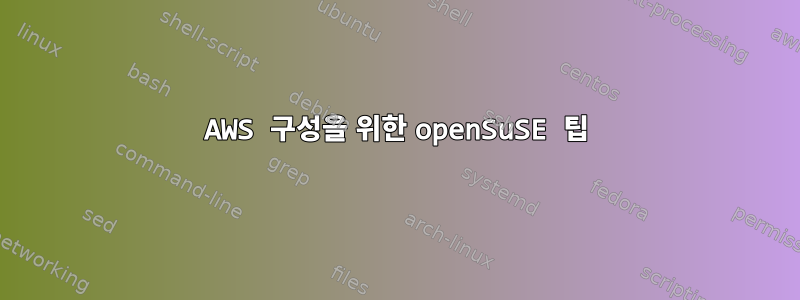
Amazon aws ec2 openSuSE 인스턴스에서:
thufir@ip-<ip>:~>
thufir@ip-<ip>:~> echo $PS1
\u@\h:\w>
thufir@ip-<ip>:~>
내가 어떻게 할프롬프트 설정좀 더 친근한? 이 h값은 hostnameIP 주소를 대략적으로 반영하며 이는 좋은 결과입니다. 호스트 이름 자체를 변경하지 않고 IP 주소보다 읽기 쉬운 "별칭"을 어떻게 만들 수 있습니까? 그러면 프롬프트는 `thufir@foo:/home/으로 표시됩니다.
(사용자 추가 yast- 쉽습니다.)
답변1
쉘에 따라 다르지만 BASH 매뉴얼 페이지에서 :
PROMPTING
When executing interactively, bash displays the primary prompt PS1 when it is ready to read a command, and the secondary prompt PS2 when it
needs more input to complete a command. Bash displays PS0 after it reads a command but before executing it. Bash allows these prompt
strings to be customized by inserting a number of backslash-escaped special characters that are decoded as follows:
\a an ASCII bell character (07)
\d the date in "Weekday Month Date" format (e.g., "Tue May 26")
\D{format}
the format is passed to strftime(3) and the result is inserted into the prompt string; an empty format results in a locale-
specific time representation. The braces are required
\e an ASCII escape character (033)
\h the hostname up to the first `.'
\H the hostname
\j the number of jobs currently managed by the shell
\l the basename of the shell's terminal device name
\n newline
\r carriage return
\s the name of the shell, the basename of $0 (the portion following the final slash)
\t the current time in 24-hour HH:MM:SS format
\T the current time in 12-hour HH:MM:SS format
\@ the current time in 12-hour am/pm format
\A the current time in 24-hour HH:MM format
\u the username of the current user
\v the version of bash (e.g., 2.00)
\V the release of bash, version + patch level (e.g., 2.00.0)
\w the current working directory, with $HOME abbreviated with a tilde (uses the value of the PROMPT_DIRTRIM variable)
\W the basename of the current working directory, with $HOME abbreviated with a tilde
\! the history number of this command
\# the command number of this command
\$ if the effective UID is 0, a #, otherwise a $
\nnn the character corresponding to the octal number nnn
\\ a backslash
\[ begin a sequence of non-printing characters, which could be used to embed a terminal control sequence into the prompt
\] end a sequence of non-printing characters
The command number and the history number are usually different: the history number of a command is its position in the history list, which
may include commands restored from the history file (see HISTORY below), while the command number is the position in the sequence of com-
mands executed during the current shell session. After the string is decoded, it is expanded via parameter expansion, command substitution,
arithmetic expansion, and quote removal, subject to the value of the promptvars shell option (see the description of the shopt command under
SHELL BUILTIN COMMANDS below).


